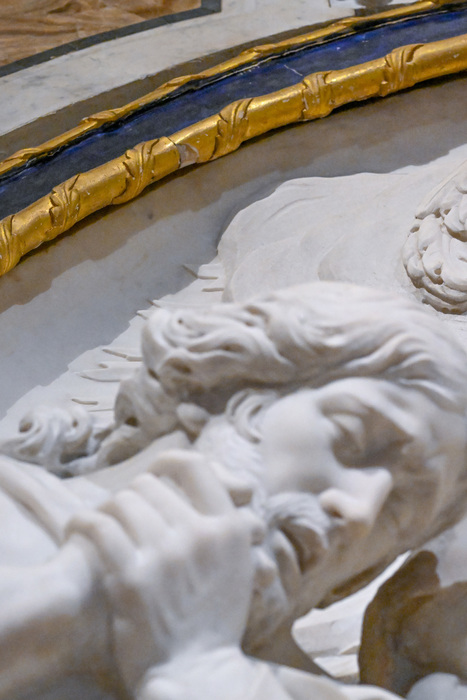Blue was invented in Naples, in the depths of the most mysterious laboratory of the 18th century, that of Raimondo di Sangro, seventh Prince of Sansevero: it was he who artificially created the precious 'ultramarine' fifty years before Jean-Baptiste Guimet, the French chemist who in 1828 managed for the first time, officially, to synthesize the pigment, as expensive as gold, obtained in nature from lapis lazuli.
And anticipating Goethe's Sicilian account by ten years, considered the oldest evidence of the artificial production of the same pigment.
This is revealed by new research from the University of Bari Aldo Moro which brings to light fascinating discoveries regarding experiments on materials, in particular the creation of artificial precious stones and the coloring of glass, conducted in the 18th century by the Prince, the whose chapel with the famous Veiled Christ is an essential stop on every tour to Naples.
The study was carried out by researchers from the Interuniversity Center "Seminario di Storia della Scienza" with the Department of Earth and Geo-Environmental Sciences of the University of Bari Aldo Moro.
The results will be published tomorrow in the article "In search of the Phoenix in eighteenth century Naples. Raimondo di Sangro, nature mimesis and the production of counterfeit stones between palingenesis, alchemy, art and economy", in the scientific journal Nuncius, Journal of the Material and Visual History of Science, but a preview was illustrated today at the Museo Cappella Sansevero by the director, Maria Alessandra Masucci, and by the team led by Francesco Paolo de Ceglia together with Andrea Maraschi of the "History of Science Seminar".
Alessandro Monno and Gioacchino Tempesta from the Department of Earth and Geo-Environmental Sciences spoke at the presentation.
Among his countless experiments, Raimondo di Sangro is known for having dedicated himself to the production of artificial precious stones and the coloring of glass.
For colors in general he had particular attention.
Even those used for the vault of the Chapel - painted by Francesco Maria Russo, known by the name of Gloria del Paradiso or Paradiso dei di Sangro - are the result of his inventions: the blues, the greens, the golds, all bright and radiant colours, product of a formula created by Raimondo di Sangro himself, which still today, after over 250 years, shine with the same intensity.
Two investigations were carried out in the Museum on the techniques for re-creating the material used to adorn the family chapel with red and blue pigments.
Analyzes confirm for the first time that the Prince succeeded in creating the artificial ultramarine blue used for the frame around the high relief above the main altar (by Francesco Celebrano and Paolo Persico, 1860s).
The multidisciplinary research of science historians and mineralists was therefore able to prove the veracity of the sources regarding the Prince of Sansevero, starting from an almost negligible detail found in a famous guide to the city of Naples from the late eighteenth century, and examining the secrets of the Chapel under the microscope. Sansevero, on the trail of two colours: red and, above all, blue.
Also noted was the unusual use of fluorite as a sculptural material, in particular for the cushions of the statues of Sant'Oderisio (Francesco Queirolo, 1756) and Santa Rosalia (Francesco Queirolo, 1756).
Reproduction reserved © Copyright ANSA

